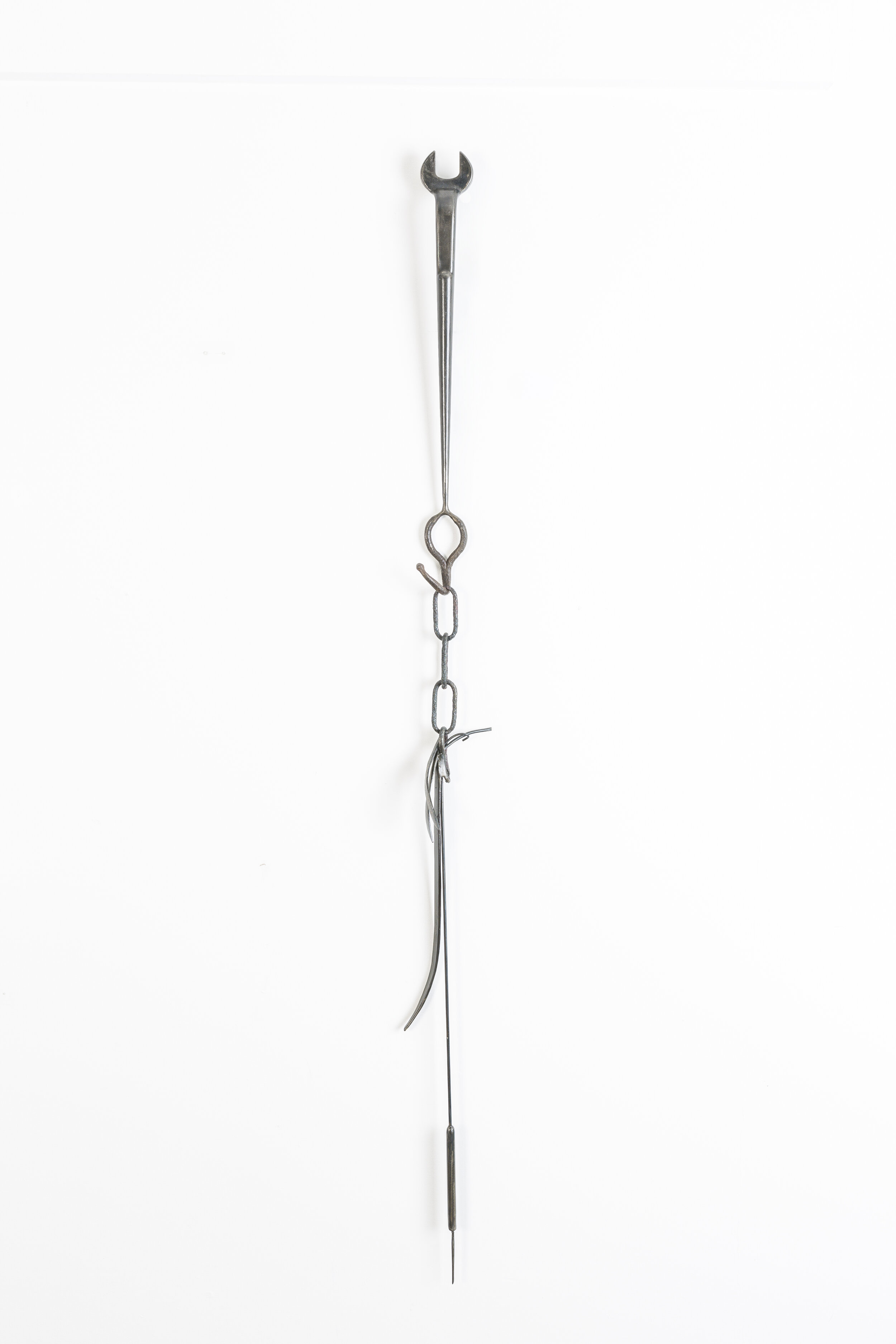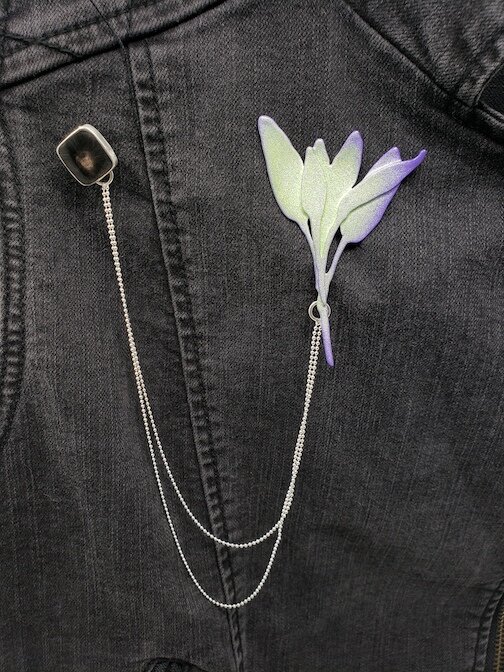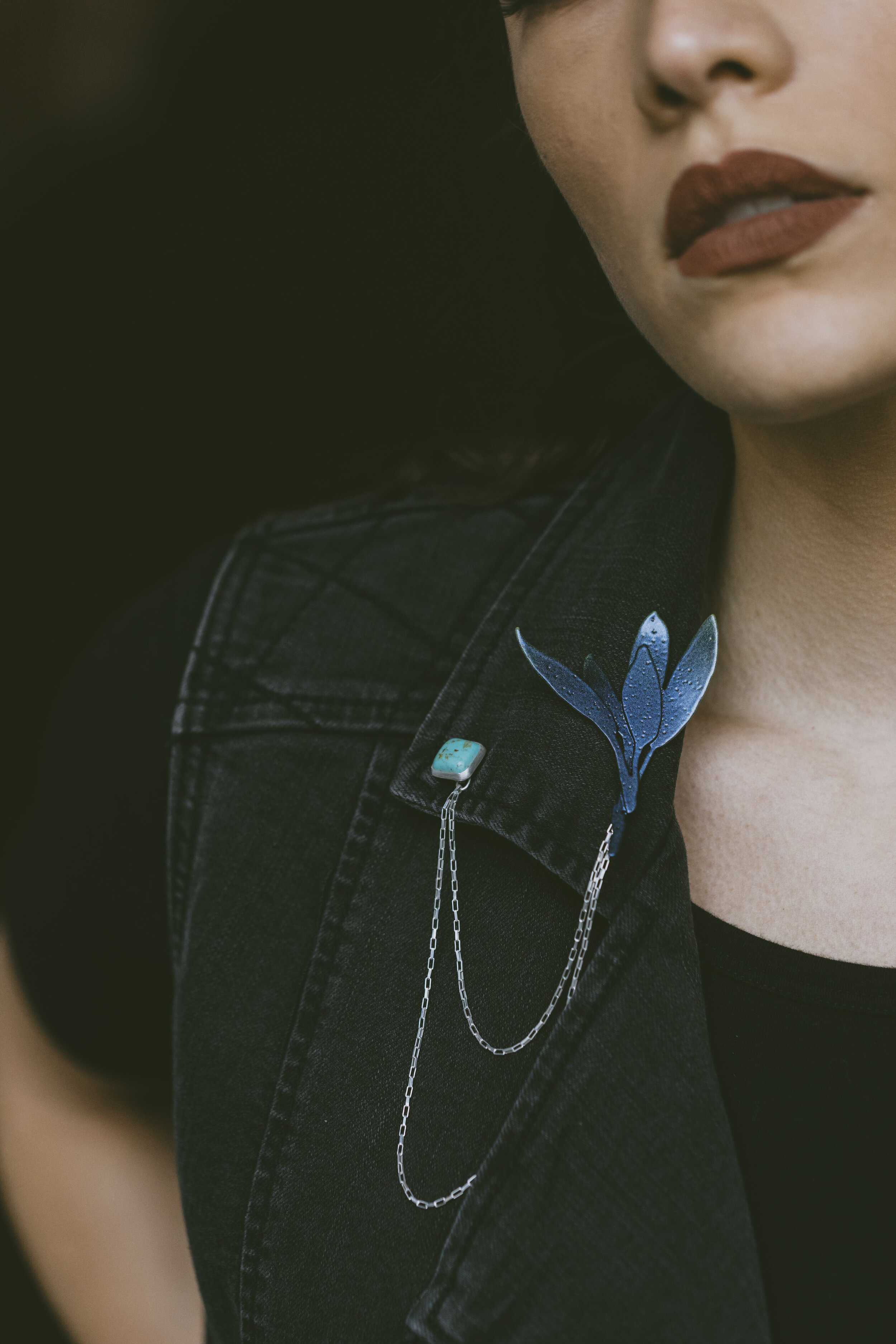Margaret Jacobs
Akwesasne Mohawk
Margaret Jacobs
Margaret Jacobs (she/her), Akwesasne Mohawk, is a metalsmith known for her steel sculpture and powdercoated jewelry. Her work explores the tension and harmony between natural and man-made, often intermingling unexpected and contradicting materials to explore those relationships.
Jacobs was born and raised in Northern New York and attended Dartmouth College where she graduated with high honors for her thesis work and received the prestigious Perspectives on Design (POD) Award. Recent awards include a 2019 Artist in Business Leadership Fellowship through the First Peoples Fund and a 2018 Rebecca Blunk Fund Award through New England Foundation for the Arts (NEFA). She was also named as one of Art New England Magazine’s 10 Emerging New England Artists.
Jacobs has participated in several artist residencies including at the Vermont Studio Center in Johnson, VT where she received a Native American Fellowship through the Harpo Foundation. Recent exhibitions include the Boise Art Museum in Idaho; 516 Arts in Albuquerque, New Mexico; the Fruitlands Museum in Harvard, Massachusetts and Franconia Sculpture Park in Minnesota. Her work has been featured in various print and online press including at mic.com in the article 11 Native American Artists Whose Work Redefines What it Means to be American, elle.com, and Harper’s Bazaar.
My recent series Steel Medicine speaks of adaptation and cultural identity and asks the question, “As we continue our efforts to protect water and land, and we move toward sustainable living, what do we carry with us physically, emotionally, and spiritually to guide our choices?”
Artist Statement
As an enrolled member of the Akwesasne Mohawk Tribe, my culture inspires me to create pieces charged with power, strength, and beauty, and in turn, I believe my work celebrates Indigenous culture with a bold, powerful aesthetic. I believe in the importance of objects and in their power to relay narratives which is why sculpture and jewelry resonates with me so strongly. The imagery and visual narratives in my work come from elements that are important to me personally, familially and culturally.
I primarily use metal — steel in my sculpture and powdercoated brass in my jewelry — because these raw materials can be used to make a combination of organic textures and surfaces. I find metal is an incredibly versatile material that lends strength and visual weight to the work, but can also be formed so that it is organic and delicate.
Color (or lack of) also plays a large role in my work. One of the main ways I apply color is through the powdercoating process which I personally execute in my own studio. Powdercoating is a process where pigment is applied electrostatically as a dry powder to an object then cured under heat. Highly resistant to chips and scratches, it’s an industrial finish most often associated with bicycle frames and automobile parts. This process gives me the ability to add incredibly unique colors, textures, and layering choices to my work.
The concepts in my work stem from a fusion of ideas that I am exploring: Mohawk Ironworkers and their relationship to steel as a material; the fragility and cyclical complexity of decay and growth in nature; and cultural storytelling elements.
My recent series Steel Medicine speaks of adaptation and cultural identity and asks the question, “As we continue our efforts to protect water and land, and we move toward sustainable living, what do we carry with us physically, emotionally, and spiritually to guide our choices?”
The Survival Medicine series continues that conversation and explores the idea of nature’s significance in that it is both incredibly resilient and incredibly fragile. Species that are common in our personal environments can become easy to take for granted so we cannot forget that our decisions and actions can impact their livelihood and survival.
My Old Growth series intertwines recognizable ironworkers' tools with influential plants and objects found in nature. My choice of using and modifying found chain and hardware gives these individual pieces the sense that they contain an old and established history full of adaptation, resilience and endurance. Retold and Remembered is another piece that is created to give the impression that it contains a deep-rooted history. Incorporating found chain and hardware with fabricated steel tobacco flowers and leaves, this work speaks of interconnected life cycles of loss and growth.
These series combine a visual vocabulary of tools commonly associated with steelwork and medicine plants. Ultimately, I'm exploring the tension and harmony between the natural and man-made, often intermingling unexpected forms, colors and materials to explore those relationships.











